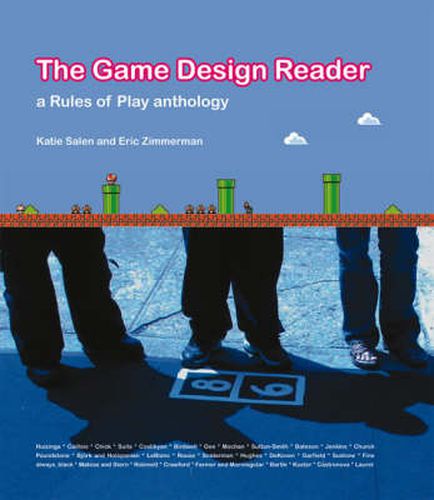Readings Newsletter
Become a Readings Member to make your shopping experience even easier.
Sign in or sign up for free!
You’re not far away from qualifying for FREE standard shipping within Australia
You’ve qualified for FREE standard shipping within Australia
The cart is loading…






Classic and cutting-edge writings on games, spanning nearly 50 years of game analysis and criticism, by game designers, game journalists, game fans, folklorists, sociologists, and media theorists. The Game Design Reader fills a genuine need in the emerging field of game design for a collection of key texts on game analysis and criticism. Written and designed to accompany Katie Salen and Eric Zimmerman’s earlier textbook Rules of Play: Game Design Fundamentals, The Game Design Reader can be used in the classroom or as a resource for game design practitioners. Thirty-two classic and cutting-edge essays by game designers, game journalists, game fans, sociologists, media theorists, and other writers from diverse fields consider foundational questions: What are games and how do they function? How do they interact with the culture at large? What critical approaches can game designers take to create meaningful experiences for players? Salen and Zimmerman have collected writings that span nearly 50 years of game analysis and offer a wide range of perspectives. Game journalists describe the rhythms of gameplay, game designers explicate their designs, sociologists consider such topics as role-playing in virtual worlds, and players offer their hands-on opinions and rants. Each text is teachable : it can act as a springboard for discussion, a class assignment, or a design project. Each text offers insights to the professional game designers or scholar as well. The book is organised around a series of Topics - ideas fundamental to the study of games, or emerging areas of research - each of which is introduced with a short essay by Salen and Zimmerman that points to relevant texts in the Reader. Interstitials - visual essays, documents, game ephemera - act as counterpoint to the texts themselves.
$9.00 standard shipping within Australia
FREE standard shipping within Australia for orders over $100.00
Express & International shipping calculated at checkout
Stock availability can be subject to change without notice. We recommend calling the shop or contacting our online team to check availability of low stock items. Please see our Shopping Online page for more details.
Classic and cutting-edge writings on games, spanning nearly 50 years of game analysis and criticism, by game designers, game journalists, game fans, folklorists, sociologists, and media theorists. The Game Design Reader fills a genuine need in the emerging field of game design for a collection of key texts on game analysis and criticism. Written and designed to accompany Katie Salen and Eric Zimmerman’s earlier textbook Rules of Play: Game Design Fundamentals, The Game Design Reader can be used in the classroom or as a resource for game design practitioners. Thirty-two classic and cutting-edge essays by game designers, game journalists, game fans, sociologists, media theorists, and other writers from diverse fields consider foundational questions: What are games and how do they function? How do they interact with the culture at large? What critical approaches can game designers take to create meaningful experiences for players? Salen and Zimmerman have collected writings that span nearly 50 years of game analysis and offer a wide range of perspectives. Game journalists describe the rhythms of gameplay, game designers explicate their designs, sociologists consider such topics as role-playing in virtual worlds, and players offer their hands-on opinions and rants. Each text is teachable : it can act as a springboard for discussion, a class assignment, or a design project. Each text offers insights to the professional game designers or scholar as well. The book is organised around a series of Topics - ideas fundamental to the study of games, or emerging areas of research - each of which is introduced with a short essay by Salen and Zimmerman that points to relevant texts in the Reader. Interstitials - visual essays, documents, game ephemera - act as counterpoint to the texts themselves.